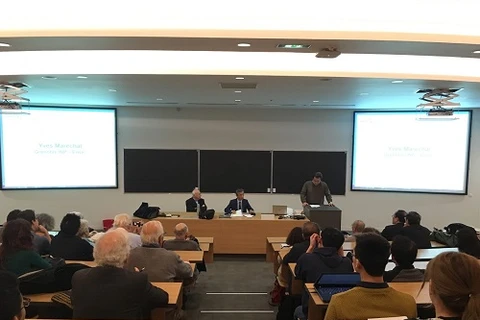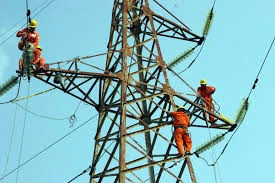HCM City (VNA) - The Government’s national power development plan that calls for a higher proportion of power generation from renewable energy by 2030, including water, wind, solar and biomass, has not met its targets or the country’s potential, according to the Vietnam Sustainable Energy Alliance (VSEA).
In the adjusted planning, thermal power will account for more than 50 percent of the total capacity, Nguyen Thu Trang, co-ordinator at VSEA, said.
Trang spoke at a seminar on sustainable development held in Ho Chi Minh City on April 29.
The seminar was organised by VSEA in co-operation with Centre of Hands-on Actions and Networking for Growth and Environment, an official national partner of 350.org.
Trang said that more than 85 million tonnes of coal would be imported for use at 52 thermal power plants by 2030, an increase from the 12 existing plants.
“Why does the country put energy security in the import of coal when there are many sources with high potential of power,” she said.
Though the price of power from thermal plants is still cheaper than power from renewable energy sources, the costs do not include the price to the environment, health and carbon tariffs.
The Government should more precisely calculate the costs to “create a fair environment” for investors who want to pour money into power projects using renewable energy sources.
According to Vietnam Energy Online , under the national plan outlined by the Government, the total capacity of hydropower projects would be 21,600 MW by 2020 and 27,800 MW by 2030, increasing from 17,000 MW now.
The total capacity of the wind power projects would be raised from 140 MW to 800 MW by 2020 and 6,000MW by 2030. As for solar power projects, the capacity would rise from 850MW to 4,000 MW by 2020 and 12,000 MW by 2030.
Other speakers at the meeting noted that Vietnam is the world’s third largest builder of coal-fired power plants, at a time when the world is switching to renewable energies.
Emissions from coal-fired thermal energy can spread hundreds of kilometres, causing serious health issues, such as chronic respiratory disease, lung cancer and stroke. It can also affect soil and crops.
Moreover, the burning of coal emits wastes such as toxic metals, ozone and fine particulates, which, in contact with sunlight, can create smog, according to a report from the Green Innovation and Development Centre last year.
In addition, coal-fired thermal energy has led to 4,300 premature deaths in Vietnam each year, a Harvard University report has said.
Ma Khai Hien, deputy head of the Energy Conservation Research and Development Centre, said there were many challenges to develop power from renewable energy sources.
Although the Government has policies to support the development of renewable energy, investors have not yet to access them, Hien said.
The low price for buying power from these sources is one of the barriers for enterprises to invest, he added.
As electricity prices are expected to continue to increase worldwide by 2023, this is an opportunity to step up investment in renewable energy, Hien said.-VNA


























